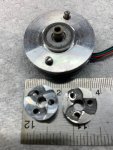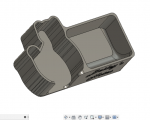So how are measuring that? Is the entire room temperature controlled? How long are leaving the material to acclimatise? Are you taking into account the temperature coefficient of the material that the object is made of, and there material of the measuring device. How are you calibrating the measuring device?
The CMM I use most is about £150,000 and only has a rated accuracy of 7 microns. Even when it's in a temperature controlled room. we tend to refer to medium tolerance is sub 50 microns (25 either side). As a result in curious as to how are actually getting your micron measurement and how repeatably you can measure to that level. How do you go about jigs and fixing for that repeatability, and how rightly is the temperature controlled. And how long are there materials being left to get the the temperature of the room.
I don't know how the slightly porous material of a material 3d print will effect the temperature coefficient of the steel either. Iirc steel is about 1.1 to the -6. So around is around 5.5 microns over 100 degrees.
And laser sintering runs around 250.
I literally measure stuff for a l living.
Just the other day I had 32,000 parts scrapped for being 9 microns over Max. Or 109 microns over nominal. I scrapped more than a dozen parts for being more than 30 microns away from nominal. I nearly had to scrap another part for having a surface roughness around the three micrometers. Aiming for 0.
You can most likely understand my skepticism about the accuracy of micron measurement claim in home workshops.
The original intent of my post was to point out that a part 3D printed out of 316 stainless steel may not meet expectations, and is a really nasty thing to post machine. But the experiment was well worth the price ($11 including shipping) from JLCPCB, who apparently do a very good job with printed circuit boards. I'm certainly not complaining about the 3D printed part, it just had characteristics that surprised me.
My 3D printer is in my cellar, which is 8 feet underground and has field stone walls and a concrete floor, both of which are well over a foot thick. The temperature remains constant within 0.1C for days at a time, and the printer and it's printing material live there so that they are pretty well stabilized.
The best I can measure directly is with a digital caliper, with 50 micron resolution. I can't speak to the accuracy of that resolution, but it is repeatable.
And if I am careful, and print an object 5mm thick, consisting of 1000 layers of 5 microns each, it will measure 5mm +/- 0.05mm. So each layer is pretty darn close to the 5 microns I calculate based on the stepper motors, pulleys, and belts. A small (say 2cm diameter) part also takes about 20 hours, so its not something I do very often.




